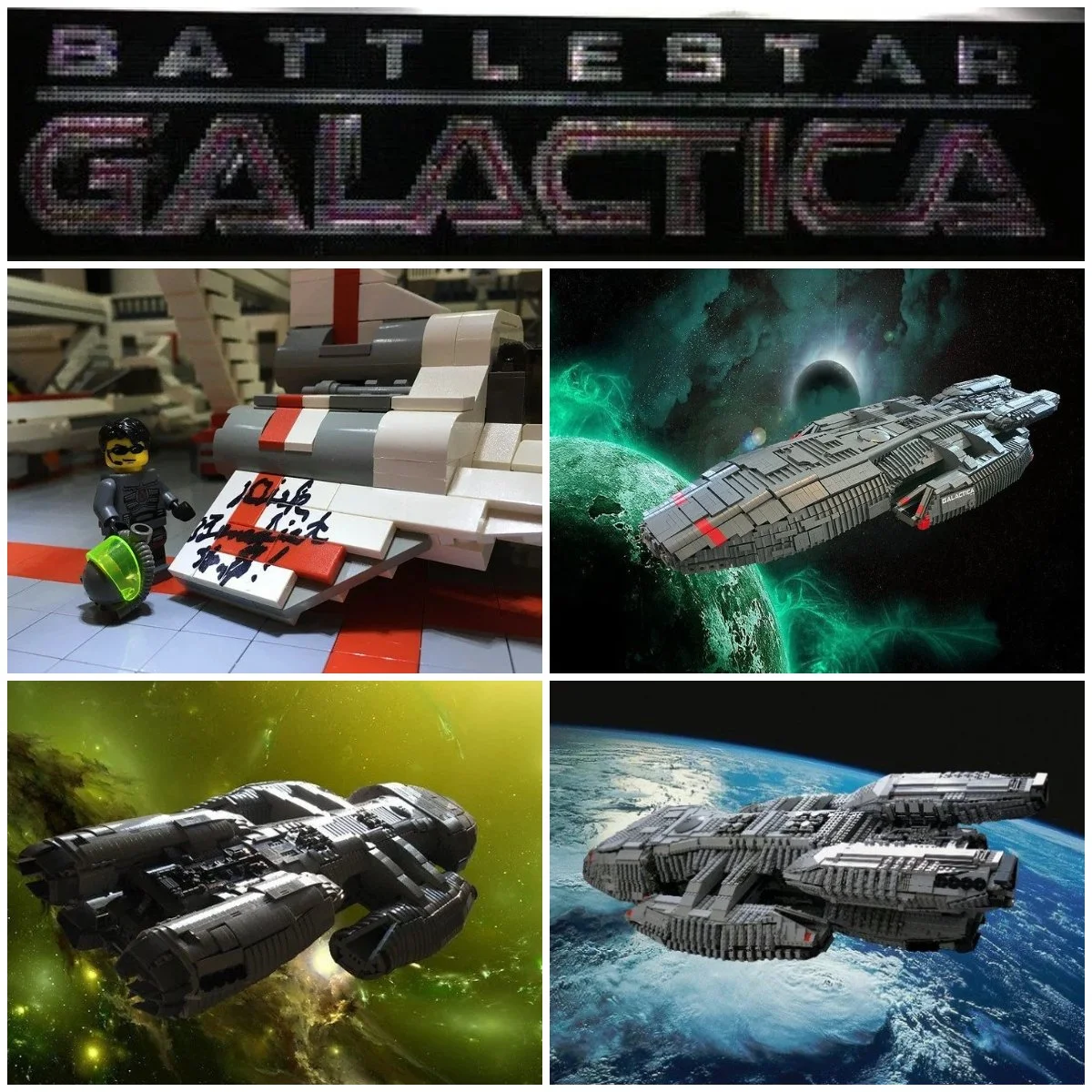The Brick Archive: Preserving LEGO History
/A few days ago, together with a few friends, I launched a new website called The Brick Archive. But what’s it all about, and how did it come to life?
To tell the story of the website, we have to go back to the second half of 2016. I’d already been into LEGO history for a while and had soon realized that there was a lot of information out there; the problem was that this information was scattered all over the Internet: Eurobricks, the Brickset forum, the BrickLink forum, Facebook groups, Instagram, Flickr… especially Flickr. But even considering only Flickr, it wasn’t (and isn’t) very easy to find what you’re looking for even if the photos have been properly organized. I kept finding new/old stuff every day and then losing it again a little later when I needed it.
At the same time, I had noticed that on Flickr there were many 2x4 collectors… I thought it was a very interesting thing—the 2x4 brick is the quintessence of LEGO, it’s one of the very first elements ever made and there are so many different variations! Production bricks, Q bricks, test bricks, Bayer bricks, BASF bricks, Grangemouth bricks, slotted bricks, thick bricks, thin bricks, Modulex bricks, Jumbo Bricks, DUPLO bricks and so many more… it sounded exciting! But also quite complicated because there was no guide, no catalog, nothing. I quickly realized that Flickr user WRme2 was the main person who was trying to catalog things and also using very cool graphics to illustrate details, like the following one.
I found one of his most detailed charts and started going through my collection of 3001old (that’s what BrickLink calls the old 2x4 “pat. pend.” brick) trying to fill the gaps, both in the chart itself and in his collection. That’s also how I started “trading” which luckily is still a thing among collectors.
You won’t find two collectors who collect the same exact things. Some even collect “full molds” (as in “all the bricks made by a single mold, one per position”)… I can hear you ask “Are they crazy?” Well, this website is called BrickNerd, so you shouldn’t be asking such a question! But the answer is: no, of course not. Studying and collecting bricks is not just “fun”—it’s also a great way to discover hidden facts in LEGO history. I’ll make an example, to explain better.
In the late 60s/early 70s, there was a mold that was used mainly (?) for testing in Denmark and/or Germany, and maybe also to make production bricks in the UK (notice how things are always very certain!) Then this mold disappears, like most molds do after a while, but then it reappears about 30 years later and, with a small modification (they added cross support), it started being used again to produce bricks for LEGOLAND parks, like the famous “glitter” milky white bricks that were used to build the Allianz Arena in LEGOLAND Deutschland.
Why did they use such an old mold? And what was it doing still around after 30 years? Probably for LEGOLAND builds they don’t need the same quality controls that they need for production bricks (even though leftovers were sold to the public in LEGOLAND shops), but it still looks quite strange. And we found out about this mold simply by collecting, analyzing and studying the bricks. I find this process to be fascinating and very educational.
All (?) the different bricks made with this special mold in the 2000s.
And then of course it’s fun, yes! Seeing all those colorful bricks aligned on a baseplate brings me (and I think all collectors) joy, so that’s probably another very good reason to do it.
So that’s how the idea for the website started. In the very last issue of the wonderful Bricks Culture Magazine, there was a fantastic image of a marbled Grangemouth brick teasing an upcoming article (by WRme2) in the following issue… but that following issue never happened! So I contacted WRme2 and we started talking. At first about a possible article for New Elementary, then maybe about two articles.
And at that point I started thinking that maybe a whole website would have made more sense, also to use as a backup. In 2018, Yahoo sold Flickr and that’s always a concern… What if the service went away overnight? It’s a bit unlikely, but still, not completely impossible. And even if they gave a two months notice, that would still be bad. It’s a common problem when you rely on external services, so having a “local” backup sounded like a sensible idea.
I was thinking of a name for the website when I stumbled into a Facebook page called “The Ghostbusters Archives.” That name sounded great, I quickly consulted with Tim Johnson and Bailey Fullerton about the best option (with or without the “the,” “archive” or “archives”) and incredibly enough, the chosen web domain, brickarchive.org, was available!
The teaser brick from the very last page of the Bricks Culture Magazine. (© All rights reserved WRme2)
While working on the website we also realized that it would have made sense not to limit it to 2x4 bricks, even though the focus would have been on them. I saw a series of wonderful posts about LEGO Typography by Bailey Fullerton (who also created the graphics for the website, with a little input from me and WRme2), those made a lot of sense to keep on the website. And then there’s the ongoing series of posts about wooden toys by Faust Chang (the top expert on LEGO wooden toys in the world!), those needed to be sorted and archived somewhere too. And so on, with more and more topics.
One thing that we certainly won’t get on the website (and that’s very alive on Flickr) is the community. All the comments from other Flickr users would be too complicated to copy for obvious reasons. But every post is linked to the original, so, as long as the service doesn’t go away, everything should be fine.
What other LEGO topics should be archived and preserved for the future? Share your thoughts in the comments below.
Do you want to help BrickNerd continue publishing articles like this one? Become a patron to show your support, get early access, exclusive swag and more.





















